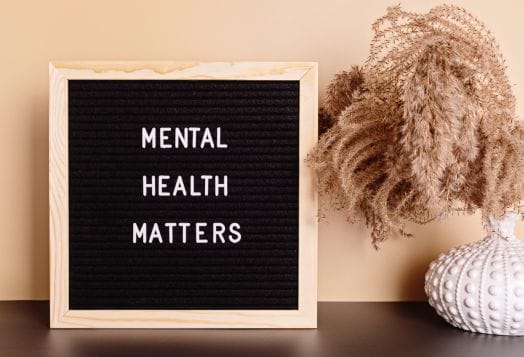Do you suspect a family member struggles with persistent worry or unease? Anxiety is a prevalent mental health issue that impacts not just individuals but family dynamics as well. Understanding anxiety and its symptoms is crucial for creating a supportive environment that prioritises mental health. This article will explore how raising mental health awareness can significantly support your loved ones.

What is Anxiety and Its Impact
Anxiety isn’t just feeling a little nervous; it’s a mental health condition that can grip you with constant worry, fear, and even physical symptoms like a racing heart or shortness of breath. It can throw life off balance, making decisions harder and straining relationships. For families, understanding anxiety and how it affects loved ones is a game-changer. With the right mental health education, it’s possible to address it head-on and build a path toward better well-being.
Why mental health awareness matters
Mental health issues often hide in plain sight. Many don’t talk about it because of stigma or lack of understanding. But here’s the thing: mental health awareness helps bridge that gap. It allows families to recognise the signs of anxiety early, build empathy, and create a space where it’s okay to ask for help.
Recognising Signs of Anxiety in Family Members
Spotting anxiety isn’t always as simple as it sounds. It wears many disguises, such as emotional, physical, and even behavioural. By raising anxiety awareness, you can pick up on the cues and step in when it matters most.
Emotional and behavioural signs
When anxiety takes hold, it’s not just a fleeting worry. It can change the way someone behaves and reacts to everyday situations. You might notice someone becoming unusually irritable, short-tempered, or even withdrawing from family activities and conversations.
It’s easy to chalk these changes up to stress or a bad mood, but when they persist, it could be a sign that something deeper is going on. These behavioural shifts can be hard to understand, especially if they come out of the blue, but they’re often a clear indicator that your loved one is silently struggling.
It’s also worth noting that anxiety can cause people to become unusually defensive or avoidant. A family member who normally enjoys socialising may start to skip gatherings, or one who is usually calm may start reacting more aggressively or withdrawing into themselves.
Physical symptoms of anxiety
Anxiety doesn’t just stay in the mind; it can take over the body as well. Often, people with anxiety will experience physical symptoms that they might not even associate with their mental state.
These symptoms can include frequent headaches, muscle tension, stomach problems, and even dizziness. You might also notice that a loved one is having trouble sleeping or always seems unusually tired. These are all common signs of anxiety that are often overlooked or brushed off as being "just stress."
The tricky part is that these physical symptoms can often be attributed to something else, like a cold or exhaustion, so they might not always raise red flags. That's why it's important to look at the bigger picture, including potential mental health benefits of nature, when addressing anxiety.
If your loved one is experiencing unexplained physical issues alongside emotional signs, it could be time to gently bring up the topic of anxiety and offer your support.
Signs in children vs. adults

Anxiety doesn’t play fair. It shows up differently depending on age. Adults may also be more likely to express their anxiety verbally, often saying things like, “I’m feeling really anxious today.”
However, children, especially younger ones, may not have the vocabulary or self-awareness to identify or explain their feelings. Instead, anxiety in children often shows up as physical complaints, such as tummy aches, headaches, or feeling nauseous. They might also become clingy, withdraw from their usual activities, or have trouble sleeping.
The Role of Mental Health Education in Addressing Anxiety
You can’t tackle what you don’t understand, right? That’s where mental health education comes in. It equips you with the knowledge to decode anxiety and take meaningful action.
Breaking the stigma
One of the biggest barriers to addressing anxiety in families is the stigma that still surrounds mental health. Unfortunately, many people still believe that mental health struggles should be kept quiet or handled alone. This stigma can prevent someone from reaching out for help when they need it the most.
That’s where mental health awareness can play a huge role. By making mental health a priority in your family, you help normalise these conversations and encourage open, honest dialogue. This not only makes it easier for loved ones to ask for help but also creates a supportive space where mental health challenges are viewed with the same care and compassion as physical health issues.
Tools for anxiety awareness
There are a variety of tools and resources available to help you become more informed about anxiety.
Counselling or therapy, both individual and family-based, can be extremely beneficial in understanding the emotional and psychological aspects of anxiety.
Workshops and seminars on mental health, available both online and in person, can provide helpful tips and strategies for managing anxiety and supporting others.
Podcasts and books about mental health are another great way to deepen your understanding while offering practical advice.
Having access to these resources means that you can not only support a loved one but also learn how to take better care of your own mental health as well.
Promoting Mental Health Awareness Within Your Family
When it comes to mental health, it’s all about creating a safe space for conversations to happen. The more open and understanding your family is, the easier it will be to support each other through challenging times.
Here are some ways to make your home more anxiety-aware and create an environment where mental health is taken seriously.
Encouraging open communication
One of the most powerful ways to support someone dealing with anxiety is through open, non-judgmental communication. This means creating a space where family members feel safe talking about their mental health without fear of criticism or dismissal.
Encouraging open communication involves actively listening and validating feelings, even if you don’t fully understand what someone is going through. Sometimes, just knowing that someone is there to listen can be the first step toward healing.
Building supportive habits
You’d be surprised how small, every day habits can have a positive impact on mental health. Activities like going for a walk, practising mindfulness, or even sitting down for a family game night can help reduce anxiety and foster a sense of connection.
These shared activities not only provide a break from the stresses of daily life but also offer opportunities for bonding, which can be incredibly soothing for those dealing with anxiety.
Encourage family members to practice saying no without guilt as a way to set healthy boundaries and manage anxiety
Even simple routines, like having a set time for dinner together or talking before bed, can create a sense of stability and comfort that helps combat feelings of anxiety.
Seeking professional help together
There are times when the best way to support someone with anxiety is by seeking professional help. Therapy, whether individual or family-based, can provide a structured space for individuals to explore their anxiety in a safe environment with expert guidance.
Visiting a mental health professional as a family can not only provide valuable insights but also reinforce the idea that mental health is a shared responsibility. Working with a therapist together shows that you’re all committed to supporting each other and helps break the isolation that can often accompany mental health struggles.
Prioritizing Mental Health in Your Family

By prioritising mental health awareness within your family, you’re giving your loved ones the tools and the space they need to cope with anxiety. Identifying anxiety symptoms, fostering open conversations to break the stigma, and offering tailored emotional and practical support are essential steps to building a supportive and resilient family environment. Remember, tackling anxiety is a team effort, and when your family works together, there’s no challenge you can’t face.
Disclaimer: This information provided is intended for general informational purposes only. It is not a substitute for professional advice or guidance. For personalised recommendations or specific concerns, please consult a certified professional.




